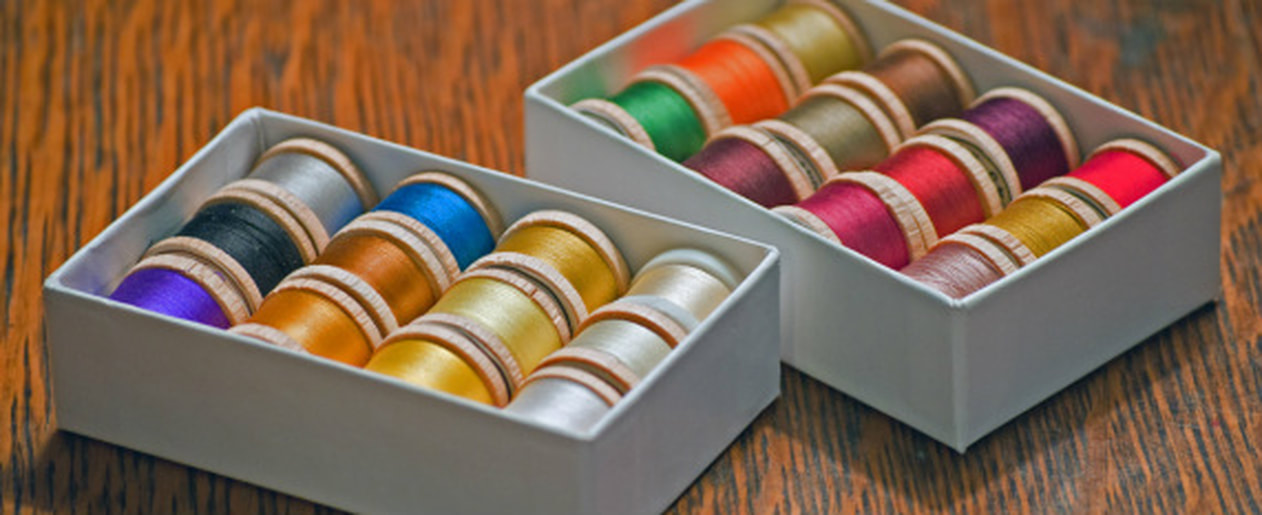About Thread
All tying thread is not the same. There are numerous differences in the material and construction processes used to make thread. There are differences in the number of strands twisted together to make the thread. Tying threads come in different diameters and breaking strengths. Tying threads come in all colors from natural drabs to fluorescents. These properties of thread play a role in the tying process as I will try to show within the lessons on this site as we go along. Thread lays the foundation of almost all wet flies. Thread is used to build a base along the shank of the hook on which all your materials will be attached. The thread is then used to “tie” all your materials to the hook while constructing the artificial fly.
What is thread made of :
Most threads for tying are made of silk, nylon or polyester. There are however a few other materials, such as kevlar, gel spun polyethylene (GSP), dacron and rayon that are also used. Silk thread was the traditional material used to tie artificial flies before the introduction of the other materials. Not as common as the nylon or polyester threads today, silk still has its following, especially for those tiers that enjoy some of the older traditional patterns.
How is thread sized for fly tying:
Fly tying threads come in a range of sizes. Today, the sizing of thread is described in two different ways. The first is the “aught” system (3/0, 6/0, 8/0 etc.). Aught or (0) is the base point, each additional (00, 000, 0000) is a decrease in the diameter of the thread. The smaller the diameter the weaker the thread. This description however does not translate well between different materials. Two different materials of the same diameter could easily have different breaking points depending on the properties of the material. The most common sizes for the purpose of tying for the instructions found on this site will be in the 6/0—8/0 range. For a beginner this is a good size to start with. The ability to work well with smaller sizes will come with increased experience.
The aught system was the standard in the fly tying industry until the late eighties when the next system of sizing was introduced to the fly tier. Denier is a description of weight per length of material and was already being used in the sewing industry. The lower the denier (weight/length) the lower the breaking strength of the thread. This is a better method for comparing different materials used in the construction of threads. For tying purposes, the denier range is 40 to about 300 grams/9000meters. For the instruction on this site concentrate on deniers in the 50-70 range. A denier of 70 is roughly in the 6/0-8/0 range for many threads. Like everything in life there are exceptions to this relationship. With the introduction of new materials and construction methods, this relationship is constantly changing, but, for the most part, the relationship is true for the silk, nylon, and polyester threads.
Properties of thread for the fly tier:
Sizing is important to the tier as a standard to work with, but what is most important in designing a pattern is the properties of each of the threads you choose to use. Knowing the properties of your thread is crucial to creating flies that behave and look the way you intend them to. This is the beginnings of design with a purpose. Thread properties important to the tier include the size (bulkiness and weight) of the thread but some other considerations are:
What material is the thread made of?
Does the thread wrap flat or stay in a rope?
How is the thread built? Is it built in a single strand or made of multiple smaller ropes?
Is the thread twisted?
Is the thread waxed or unwaxed?
Does the thread readily soak up water or repel water?
Does the thread change color when wet?
The more one knows about the thread the more purposeful a tier can be in fly design. I don’t really recommend any specific type of thread for this reason. I recommend the sizes listed above for beginners. As a tier, think about what you want to accomplish from a certain pattern. The design should be purposeful. It should not be just a matter of how it looks, but how the fly will behave and look in the water during the type of presentation intended. Tradition and preference for purpose will play the largest role in thread selection. Experience will lead the tier to preference. The right thread accompanied by the right hook for the fly’s intended purpose is a great first step.
